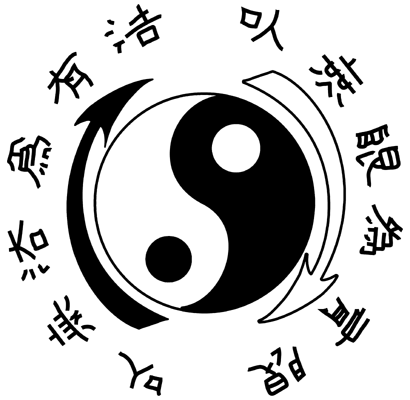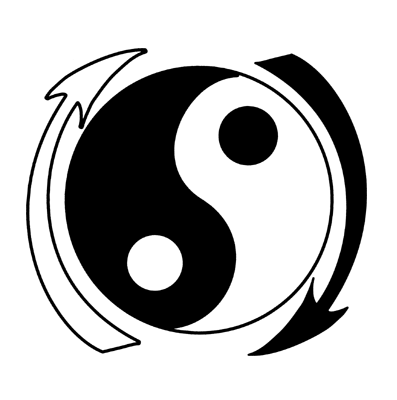|
|
|
|
jeet kune do
Jeet Kune Do (JKD) is a martial art and philosophy developed by Bruce Lee in the late 1960s, emphasizing practicality, efficiency, and directness in combat. It is a hybrid system that incorporates techniques from various martial arts, such as Wing Chun, boxing, and fencing, focusing on adaptability and personal expression rather than following a fixed style.
• Absorb What Is Useful: Adopt techniques that work best for the individual.
• Simplicity and Directness: Focus on straightforward and efficient movements.
• Economy of Motion: Use minimal effort for maximum effect.
• Adaptability: Be fluid and adaptable to any situation, like water.
• Combat Realism: Train with an emphasis on real-world scenarios.
JKD promotes personal growth and self-discovery, encouraging practitioners to create their own path by blending what is effective for them. It is more of a philosophy than a traditional martial art, aiming for practical self protection and individual expression.
|

|
|
|
jun fan gung fu
Jun Fan Gung Fu is a martial art created by Bruce Lee, named after his Chinese given name, Lee Jun Fan. It represents his early martial arts system and serves as the precursor to his later philosophy, Jeet Kune Do. Jun Fan Gung Fu blends techniques from Wing Chun (Lee's foundational style), Western boxing, fencing, and various other martial arts.
• Centerline control, emphasizing direct attacks along an opponent’s center.
• Footwork and mobility, to maintain optimal positioning and balance.
• Efficient, fluid strikes, focusing on speed and power with minimal movement.
Jun Fan Gung Fu aims to be practical and adaptable, using techniques that work in real-world combat scenarios, while gradually moving toward Lee’s philosophy of martial arts as an evolving, personalized system.
|

|
|
|
grappling
The art of clinch and ground fighting described here is a hybrid grappling system combining elements from Greco-Roman Wrestling, Judo, Brazilian Jiu-Jitsu (BJJ), Silat, and Kali. It focuses on control, submissions, and escapes in both standing and ground scenarios.
• Clinch work: Using body locks and throws to control from a standing position.
• Ground control and submissions: Pins, arm bars, leg locks, and chokes.
• Striking integration: Incorporating strikes while grappling.
• Practical application: Control & restraint, without always going to the ground.
This system is highly versatile, effective for sport, self protection, or control-based scenarios.
|

|
|
|
kali
Filipino Kali, also known as Arnis or Eskrima, is a martial art from the Philippines that focuses on weapons-based combat, particularly with sticks, knives, and improvised weapons. It also includes empty-hand techniques like punches, kicks, joint locks, and disarmament.
• Weapon-Based Training: Enhancing hand-eye coordination and timing.
• Flow and Fluidity: Smooth transitions between techniques and ranges.
• Self Protection: Practical, real-world applications for neutralizing threats.
• Range Awareness: Strategies for long, medium, and close-range combat.
• Ambidexterity: Develops the ability to use both hands and employ feints.
Kali is also a cultural heritage of the Philippines, combining indigenous fighting arts with historical influences. It’s a highly adaptable and effective martial art for self protection and combat sports.
|

|
|
|
panantukan
Panantukan, also called Filipino Dirty Boxing, is the hand-to-hand combat aspect of Filipino martial arts like Kali and Eskrima. It emphasizes practical, street-effective techniques, incorporating punches, elbows, forearms, headbutts, and low-line kicks. Unlike traditional Western boxing, Panantukan integrates tactics like limb destruction, where the practitioner targets the opponent’s arms and joints to weaken or disable them. It also uses trapping and off-balancing techniques, exploiting an opponent’s openings for rapid, decisive strikes.
Panantukan is highly adaptive and focuses on close-quarters combat, employing angles, fluid footwork, and precise timing to control distance and create striking opportunities. It is designed for real-world self protection, making it an effective and versatile system for personal protection.
|

|
|
|
silat
Silat is a collective term for a variety of indigenous martial arts from Southeast Asia, notably practiced in Indonesia, Malaysia, and the Philippines. It encompasses a wide range of styles, each characterized by fluid movements, rapid strikes, and complex footwork. Silat emphasizes both armed and unarmed combat techniques, making it versatile for different fighting situations.
Maphilindo Silat is a contemporary blend of these regional styles, integrating the most effective techniques from Malaysia, the Philippines, and Indonesia. This synthesis, popularized by Guro Dan Inosanto, focuses on disrupting an opponent’s balance and manipulating their limbs through techniques such as trapping and joint locks.
Practitioners of Maphilindo Silat excel in close-quarters combat and ground fighting, employing tactics that include throws and submissions. The style highlights the importance of agility, deception, and continuous motion to keep opponents off-balance. Rich in cultural heritage, Maphilindo Silat not only preserves the traditional aspects of Southeast Asian martial arts but also adapts them for practical self protection in modern contexts.
|

|
|
|
thai boxing
Thai boxing, or Muay Thai, is a martial art and combat sport that focuses on stand-up striking and clinching techniques. Often referred to as the “art of eight limbs,” it utilizes the combined use of fists, elbows, knees, and shins, making it a highly effective and versatile fighting style.
Muay Thai emphasizes powerful strikes, precision, and conditioning, allowing practitioners to deliver impactful blows from various angles. The sport also incorporates clinching techniques to control opponents, create openings for knee strikes, and set up throws. Known for its rigorous training and emphasis on physical fitness, Muay Thai has gained global popularity, both as a competitive sport and as a practical self protection system.
|

|
|
|
Adult students will be graded against all of the arts listed above and awarded a rank under ATOM Martial Arts.
Junior students will be graded against the arts listed above, with the exception of Panantukan and some elements of Kali (no knife) and awarded a rank under ATOM Martial Arts.
attendance, attitude and ability
Students are continually assessed in class and are awarded achievement stripes for their current belt at the discretion of the instructors.
This allows for attendance, attitude and ability of students to be monitored and rewarded.
|
|
white |
beginner |
orange |
red |
|
yellow |
intermediate |
green |
blue |
|
purple |
advanced |
brown |
black |
|
black II |
expert |
black III |
black IIII |
|
instructor |
elite |
mkg instructor |
|
|
|
Once three achievement stripes have been awarded the student is elegible to attend a formal grading conduct
by ATOM Instructors at regular ATOM training venue.
Formal gradings are by invitation only and are subject to an additional cost. If successful students
are awarded a complementary belt and certificate from ATOM Martial Arts.
See 2024 grading dates
fast track programme for experienced students
For students experienced in another martial art or have moved location and are seeking a new JKD home, we offer a fast
track grading programme to accelerate your progression under ATOM.
Contact atommartialarts@hotmail.com for further information.
|
|
progression beyond atom
ATOM Martial Arts proudly operates two official Minnesota Kali Group branch schools: MKG Winchester (Hursley) and MKG Portsmouth (Fareham),
led by our two certified MKG instructors, Duncan and Richard.
We offer a pathway for students to be recognized and recommended for the MKG Student and Instructor programmes under Guro Rick Faye.
For further details, please get in touch with us.
Participation in the programme is subject to the discretion of the ATOM Instructor Team and the MKG UK & European Head Instructor (Aaron Davis).
Additional training hours and fees, outside ATOM Martial Arts regular schedule, will apply.
|
|

MKG locations in the UK
|
“Creating more functional, more peaceful individuals
for a more functional, more peaceful world” - Guro Rick Faye
|
|
|
|
|
|
|






